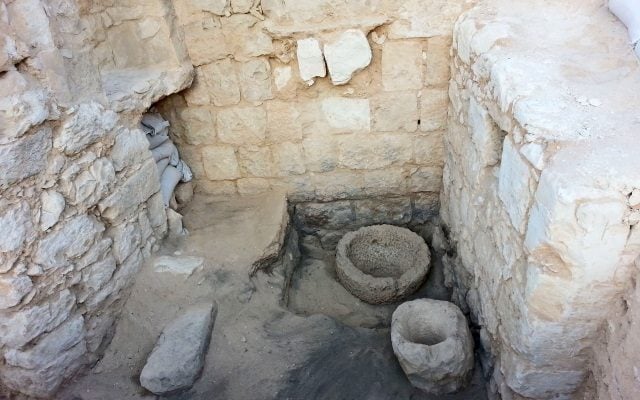Israeli archaeologists exposed a 1,500 year-old livestock stable used by monks during the Byzantine era at the Avdat National Park in southern Israel.
The stable, which was constructed in one of the rock-hewn caves on the mountainside, was used as a service structure by the local residents who were apparently monks. It was divided into a number of stone-built rooms, and the walls were adorned with painted decorations of crosses. Stone basins were also discovered that were probably used for storing food and water for the animals.
“The identification as a stable was corroborated by an almost 1 meter thick layer of organic matter (donkey, sheep and goat manure) on the floor of the building,” Professor Scott Bucking of DePaul University in the United States and Dr. Tali Erickson-Gini of the Israel Antiquities Authority (IAA), who headed the dig, explained.
“It seems that the place was destroyed by an earthquake that decimated the city of Avdat in the early seventh century CE,” they estimated.
Students from the Har Ha-Negev Field School participated in the excavation. They sifted the many hundreds of buckets of organic matter that were excavated in the stable.
Seeds and various small organic remains were collected, and researches hope they will shed further light on the use of the building, and other questions, such as what food the local inhabitants consumed and what was the environment in antiquity.
The researchers hope that the grape seeds they found, which were well-preserved because of the dry conditions that prevail in the region, will allow them to extract the DNA of the ancient plant and identify the different species that were grown in the area.
By: Aryeh savir, World Israel News




